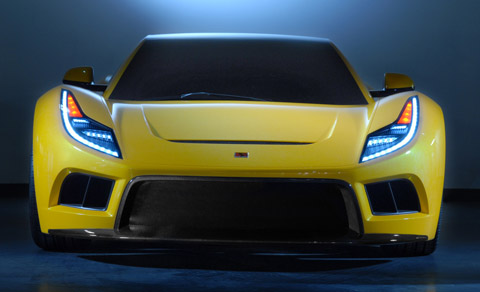
Expect these new models to hit the road in the next five years.
Everybody knows the auto world has shifted. The trick is divining which brands have got the gumption to last.
Now, with President Obama's new efficiency standards requiring a fleet-wide fuel economy average of 35.5 miles per gallon, automakers have their work cut out for them.
Domestic carmakers in particular are gearing up to battle forthcoming offerings from new-to-the-U.S.Fiat, with its diminutive 55.5-mile-per-gallon Fiat 500, and Chinese newcomer BYD, maker of the staid hybrid-electric F3DM sedan.
Motor City had better get cracking. It takes four years to produce a market-ready vehicle, and a typical lifecycle for one model is seven years. While we wait to see what brands emerge victorious, Honda's mod CR-Z and Ford's "eco-boosted" Euro models point to the types of cars we can expect by 2014.
Just don't get your hopes up for lots of choices when it comes to plug-in cars. Automakers insist there's still much to improve about the humble combustion engine, and they plan to eek out all the improvement they can get.
Tom Plucinsky, a spokesman for BMW, says the company will bring a gasoline-powered and highly efficient X1 compact SUV to market by 2014.
"There's no breakthrough," Plucinsky says. "It's all little things that can add up. We've made big advances over the last five years or so in the efficiency of the gasoline engine, but we think that there's another 10 percent there."
BMW will find that 10 percent by using smaller (read: lighter), forced-induction engines that generate more power. (Plucinsky says naturally aspirated engines will be relatively nonexistent by 2014). Ford and Mercedes have also said they'll bring 4-cylinder, turbo-charged engines to the U.S. in the next several years.
Audi has joined the light-engine surge as well, committing to building a next-generation S5 that weighs hundreds of pounds less than the current version. Audi's Bradley Stertz says advances in aluminum construction will lighten its load, making it more fuel-efficient.
In the meantime, Americans can expect a trickle of vehicles from afar. Italian-run Fiat and Alfa Romeo will likely have vehicles in U.S. showrooms by 2014. But the real news lies further east: China. At the Detroit Auto Show Chinese automakers Brilliance and BYD ("Build Your Dreams") showed cars that could eventually reach the states, perhaps branded under a different name. Geely and Chery are other Chinese automakers with ideas for expansion outside the East.
Lincoln Merrihew, senior vice president of business solutions for market research firm TNS, says he expects a China-made car to hit in five years or less.
"It'll be a mixture of capabilities and bravado that will determine who comes in under their own flag," Merrihew says.
Asia leads the green-power front. Nissan is testing battery-charging networks in Arizona, saying an unnamed electric vehicle will go on sale by late 2010. Toyota says it will sell one million gas-electric hybrids per year during the 2010s; Honda President Takeo Fukui has repeatedly said his company is most-heavily endorsing hydrogen technology.
Still, no one technology has emerged the clear winner. Sara Pines, a spokeswoman for Honda, says the company is experimenting with several possible solutions. Others say the as-yet undetermined carbon-emission standards in California will largely determine how automakers move forward.
That uncertainty has basically created a level playing field. Now it'll come down to whether the upstarts can hang with the big boys.






















































